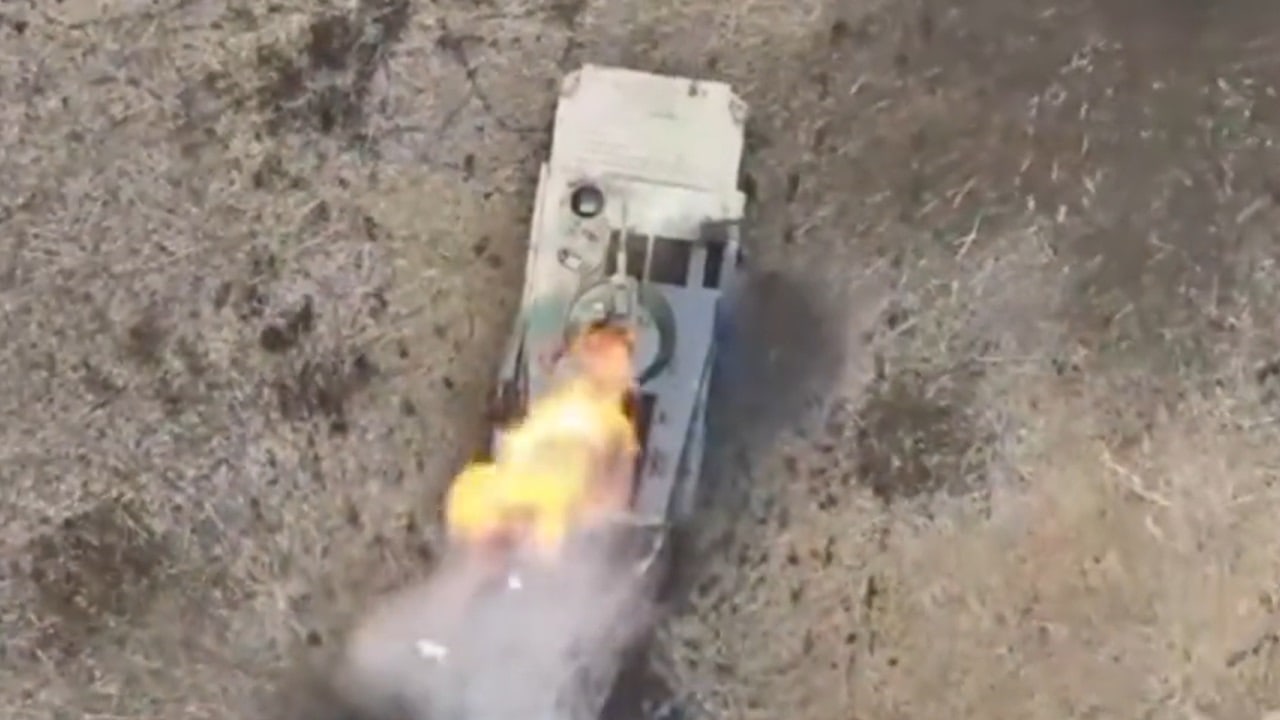Throughout the last year of warfare, Russia has suffered staggering losses throughout the spectrum of its military equipment.
Main battle tanks, (MBTs), armored vehicles, and even fighter jets have been taken out by Ukraine’s arsenal of some domestic and mostly Western-originated weaponry.
The Ukraine Weapons Tracker Twitter handle recently released footage showing perhaps the latest assault of a Russian infantry fighting vehicle.
In the minute-long video, a Russian BMP-1 vehicle is struck by a direct artillery hit reportedly of the 110th Mechanized Brigade in Donetsk Oblast. Once the BMP-1 is hit, a blume of flames emerges.
A Brief Overview of the BMP Family
The Soviet-era amphibious tracked BMP-1 infantry fighting vehicle (IFV) is one of the antiquated weapons Moscow has thrown into its Ukraine invasion. Following World War II, the former USSR envisioned the development of safer vehicles better equipped to transport soldiers amidst enemy fire.
High speed, solid armament, and the ability to allow crews to launch weapons from inside the vehicle comprised the “battle taxi’s” top 3 requirements. By the late 1980s, the BMP-1 variant was first produced. Around 1,000 of these armored fighting vehicles remain in service with Russian forces today, with another 7,000 in storage.
Equipped with a magazine-fed low velocity 73mm smoothbore gun, the BMP-1 hardly holds up to the advanced projectiles and other munitions that are more common today. Additionally, the vehicle’s turret has blind sports.
As outlined by Forbes, the BMP-1’s worst characteristic is its steel armor, which heavy machine guns can easily penetrate. Additionally, “the BMP-1 stows ammunition in the passenger compartment.
A direct hit can set off the ammo, with obvious negative implications for the infantry sitting right next to the exploding shells.”
The BMP-1 Has Not Performed Well in Ukraine
Since the BMP-1 variant is obviously not suited to contend with modern enemy fire, why is Russia resorting to these ancient infantry fighting vehicles? Over the years, the BMP-2 and BMP-2 variants were developed to incorporate several key enhancements.
Initially, Russia did deploy these more sophisticated variants in the early days of the war. However, the BMP-2 and BMP-3 vehicles did not fare well.
One open-source intelligence analyst estimates that Ukrainian forces either destroyed or captured at least 220 BMP-3s, 750 BMP-2s, and 300 BMP-1s.
In December, footage depicting Ukraine’s 98th Territorial Defense Battalion Azvov traveling with an assortment of Russia’s BMP-2s and BMP-3s. Unlike the original variant, the BMP-3 is considered a formidable infantry vehicle.
Equipped with a 100 mm 2A70 gun, a 30mm 2A72 coaxial cannon, and two additional PKT machine guns at each side of the hull’s front, the BMP-3 can pack a punch.
#Ukraine: A Russian BMP-1 infantry fighting vehicle was destroyed by a direct artillery hit of the 110th Mechanized Brigade in Novoselivka Druha, #Donetsk Oblast. pic.twitter.com/Z2zF2qPTJ1
— ???????? Ukraine Weapons Tracker (@UAWeapons) May 2, 2023
As detailed by Army Recognition, “The 100 mm 2A70 rifled gun can fire 3UOF17 and 3OF32 high-explosive fragmentation rounds at a rate of 8 to 10 rds/min, or the 3UBK-10-3 with the 9M117 laser-guided anti-tank missiles. The 9M117 missile is able to penetrate between 650 and 700 mm of conventional steel armor. Russia has also developed the 9M117M and 9M117M1 fitted with a tandem warhead able to penetrate ERA (Explosive Reactive Armor). The missile has a firing range from 100 to 5,500 m.”
While the BMP-3 may be a massive step up from Moscow’s original infantry fighting vehicle, Ukraine has been able to wipe out or seize a large portion of these valuable IFVs.
Maya Carlin, a Senior Editor for 19FortyFive, is an analyst with the Center for Security Policy and a former Anna Sobol Levy Fellow at IDC Herzliya in Israel. She has by-lines in many publications, including The National Interest, Jerusalem Post, and Times of Israel. You can follow her on Twitter: @MayaCarlin.

